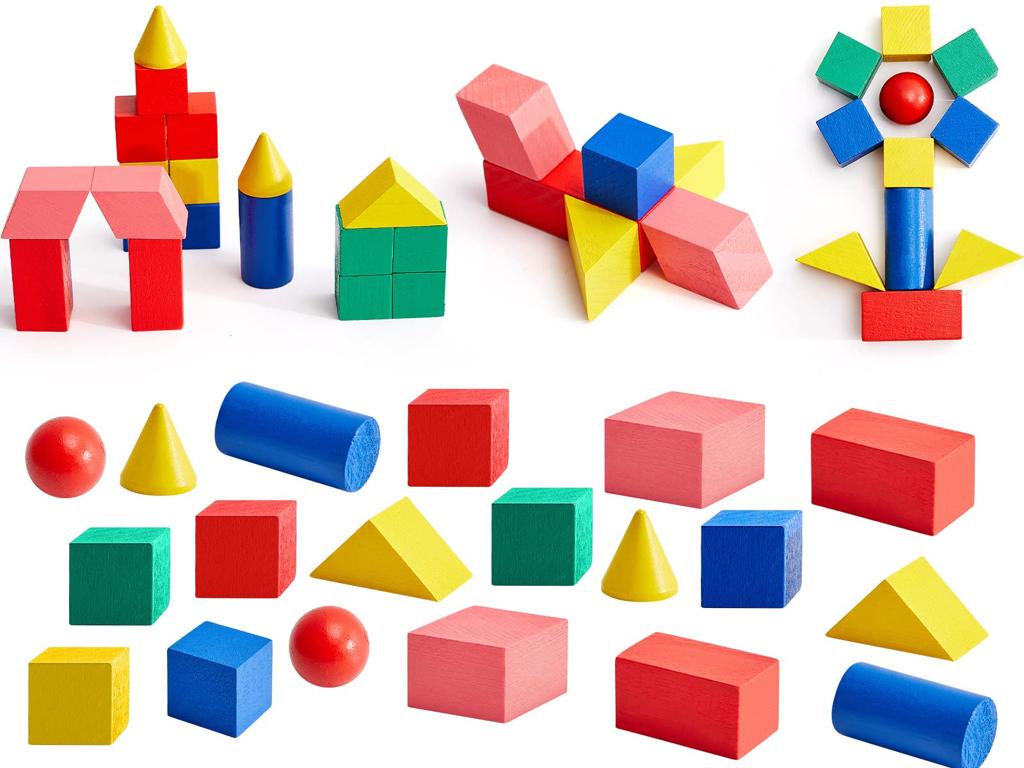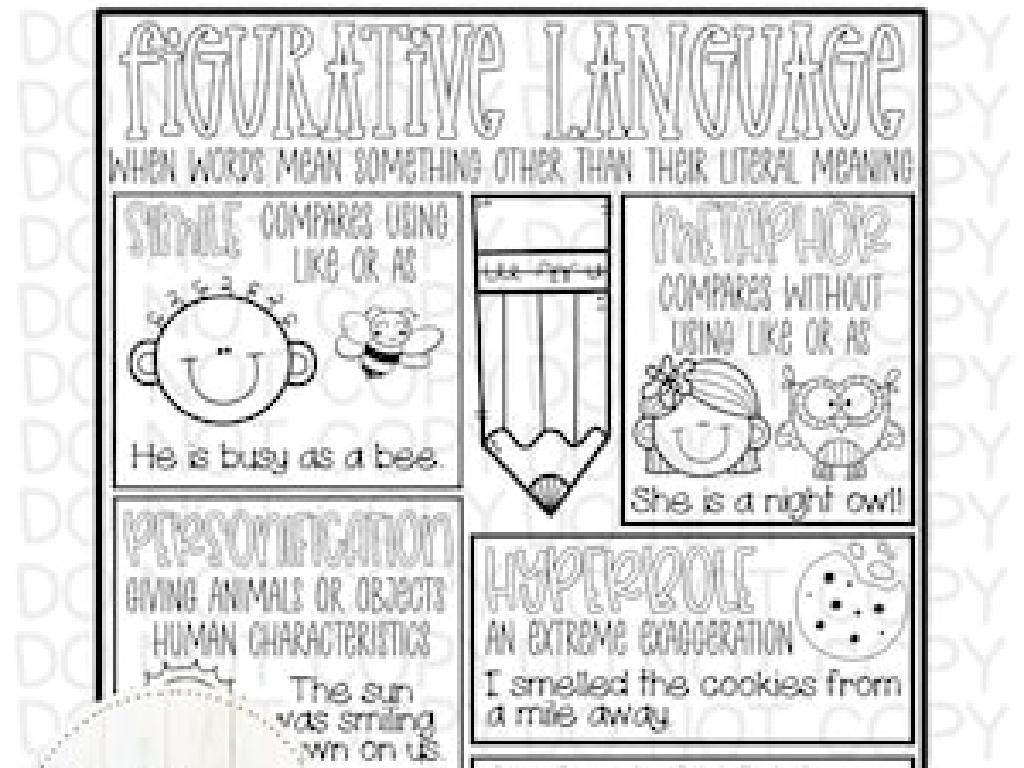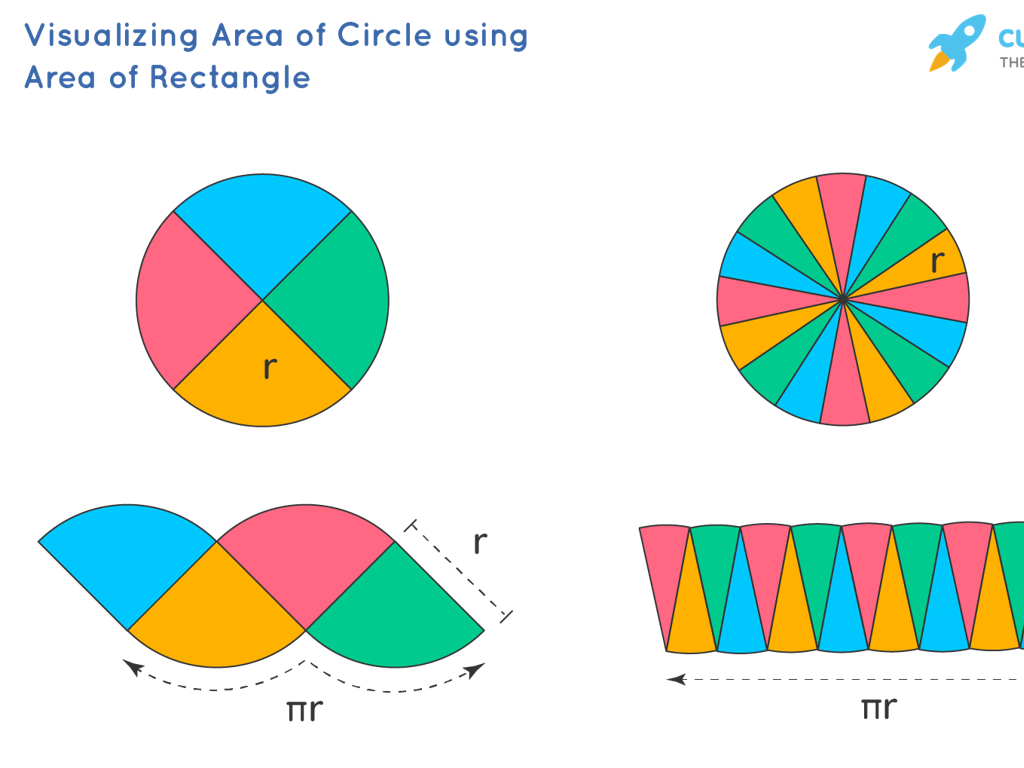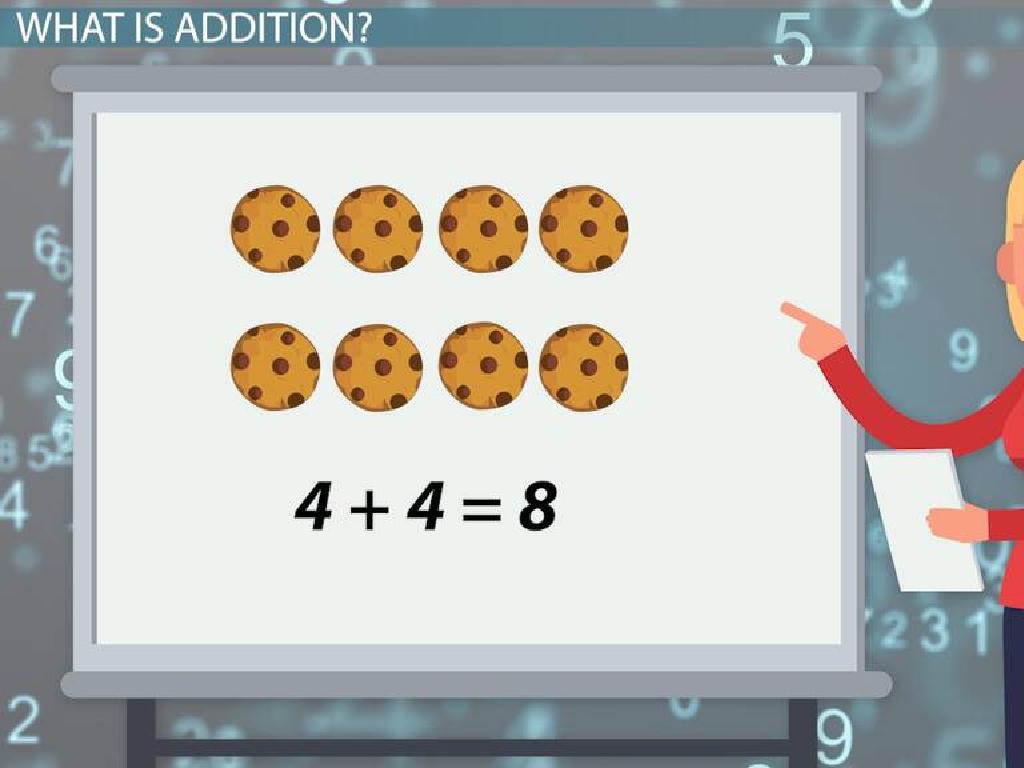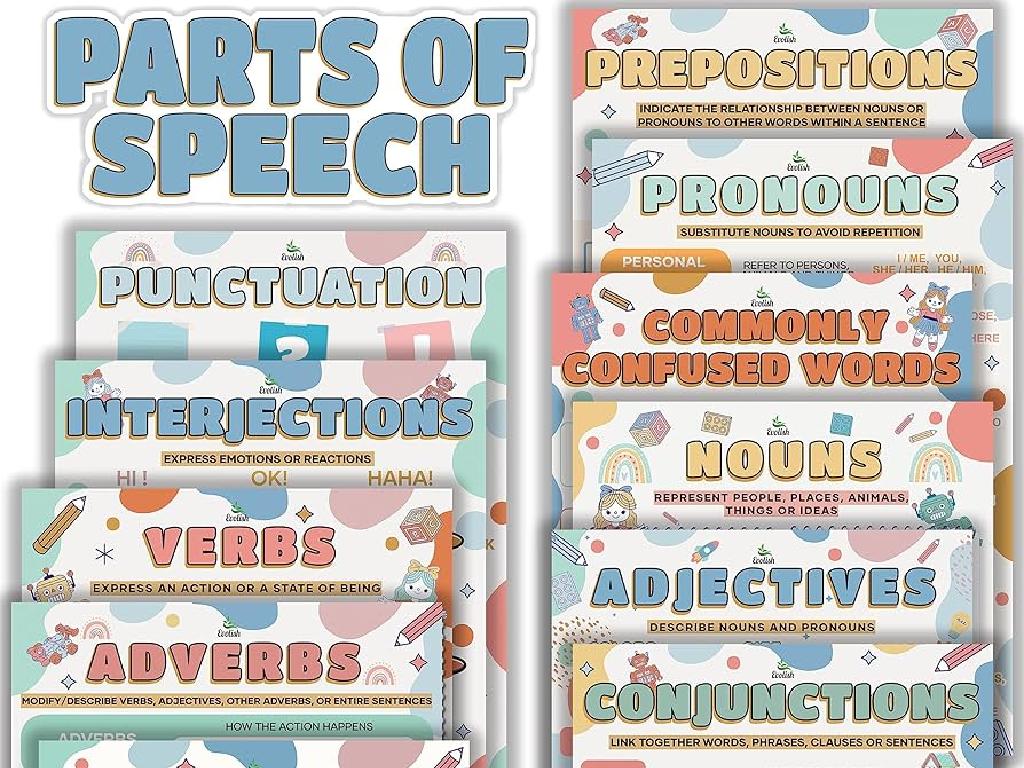Use Possessive Pronouns
Subject: Language arts
Grade: Fourth grade
Topic: Pronouns
Please LOG IN to download the presentation. Access is available to registered users only.
View More Content
Possessive Pronouns in Language Arts
– Understanding possessive pronouns
They show who owns something, like ‘his’ book or ‘her’ apple.
– Why we use pronouns
– Examples of possessive pronouns
‘Mine’, ‘yours’, ‘his’, ‘hers’, ‘ours’, ‘theirs’ show ownership without naming the owner again.
– Practice using possessive pronouns
We’ll do fun activities to learn how to use ‘my’, ‘your’, ‘our’ correctly!
|
This slide introduces possessive pronouns to fourth-grade students, explaining their function and importance in language. Possessive pronouns are used to show ownership and avoid repeating the owner’s name. They make sentences clearer and more concise. Provide examples to illustrate how possessive pronouns replace nouns to show who owns something. Engage students with activities where they replace nouns with possessive pronouns in sentences, ensuring they grasp the concept of ownership in language. Encourage students to share sentences using possessive pronouns related to their own belongings to make the lesson relatable and memorable.
Possessive Pronouns: Showing Ownership
– What are possessive pronouns?
– Words that tell who something belongs to
– They show ownership
– Like saying ‘this pencil is mine’ instead of ‘this is my pencil’
– Replace nouns to show ownership
– Instead of ‘Sarah’s book’, say ‘hers’
– Examples: ‘mine’, ‘yours’, ‘ours’
– ‘Mine’ for me, ‘yours’ for you, ‘ours’ for us
|
This slide introduces the concept of possessive pronouns to fourth-grade students. Possessive pronouns are used to express ownership and can take the place of nouns to avoid repetition. They are useful in making sentences clearer and more concise. Provide examples on the board, showing how to replace phrases like ‘the book of Sarah’ with ‘her book’ to demonstrate how possessive pronouns function. Encourage students to practice by writing sentences using possessive pronouns and identifying them in reading passages. This will help solidify their understanding of how possessive pronouns are used in everyday language.
Possessive Pronouns: Singular and Plural
– Singular possessive pronouns
– ‘mine, yours, his, hers’ show ownership
– Plural possessive pronouns
– ‘ours, yours, theirs’ for group ownership
– Usage in singular and plural
– They replace nouns to avoid repetition
– Practice with examples
– ‘The red ball is mine. The books are ours.’
|
This slide introduces possessive pronouns, focusing on the difference between singular and plural forms. Singular possessive pronouns are used to indicate ownership by one person, while plural possessive pronouns are used for something owned by a group. It’s important to highlight that possessive pronouns are used to replace nouns to show who owns something without repeating the noun. Provide examples and encourage students to create sentences using both singular and plural possessive pronouns. This will help them understand how to use these pronouns in different contexts.
Mastering Possessive Pronouns
– Avoid repetition with possessive pronouns
– Example: ‘The bicycle is John’s.’ to ‘The bicycle is his.’
– ‘John’s’ is replaced by ‘his’, showing ownership without repeating the noun.
– Practice changing sentences
– We’ll convert sentences to include possessive pronouns like ‘his’, ‘hers’, ‘theirs’.
– Enhance your writing skills
– Using possessive pronouns makes our sentences clearer and more interesting.
|
This slide introduces the concept of possessive pronouns and their utility in making sentences concise and avoiding repetition. Start by explaining that possessive pronouns replace nouns to show who owns something. Use the example provided to illustrate how ‘John’s’ can be replaced with ‘his’ to avoid repeating ‘John’. Engage the class with practice exercises where they convert sentences to include possessive pronouns, reinforcing the concept. Emphasize how using possessive pronouns can enhance their writing by making it more varied and engaging. Prepare a list of sentences for the students to practice with and consider peer review to make the activity interactive.
Possessive Pronouns vs. Contractions
– Understand possessive pronouns
– They show ownership, like ‘his’, ‘her’, ‘its’
– Don’t mix up with contractions
– Example: ‘its’ vs. ‘it’s’
– ‘its’ shows belonging, ‘it’s’ means ‘it is’ or ‘it has’
– Practice: Identify pronoun or contraction
– We’ll decide if words show ownership or are short for two words
|
This slide aims to clarify the difference between possessive pronouns and contractions, which often confuse students. Possessive pronouns are used to show ownership or belonging, such as ‘my’, ‘your’, ‘his’, ‘her’, ‘its’, ‘our’, and ‘their’. Contractions, on the other hand, combine two words into one, like ‘it’s’ for ‘it is’ or ‘it has’. Provide clear examples to illustrate the difference, such as ‘The cat licked its paw’ (possessive) versus ‘It’s raining outside’ (contraction). For the practice activity, prepare sentences where students must identify whether the highlighted word is a possessive pronoun or a contraction. This will help reinforce their understanding and ability to use possessive pronouns correctly in their writing.
Activity Time: Possessive Pronoun Scavenger Hunt
– Find objects in the classroom
– Describe ownership with pronouns
– Use ‘my’, ‘your’, ‘his’, ‘her’, ‘its’, ‘our’, ‘their’
– Convert sentences to possessive pronouns
– ‘Sarah’s book’ is ‘hers’ and ‘the students’ desks’ are ‘theirs’
– Share your findings with the class
|
This activity is designed to help students understand and use possessive pronouns in a fun and interactive way. Have the students walk around the classroom and pick out various objects. They should then use possessive pronouns to describe who the objects belong to, converting from phrases like ‘This is my pencil’ to ‘This is mine.’ Encourage creativity and ensure they use a variety of pronouns. Possible activities: 1) Pair students to find and discuss objects. 2) Create a classroom display with objects and their corresponding possessive pronouns. 3) Have students write a short story using possessive pronouns. 4) Play a game where students guess the owner of an object based on the possessive pronoun clue. 5) Use a ball, tossing it to students to prompt them to come up with a sentence on the spot.
Class Activity: Crafting Stories with Possessive Pronouns
– Write a short story
– Include possessive pronouns
– Use ‘his’, ‘her’, ‘its’, ‘our’, ‘their’, ‘my’, ‘your’ to show ownership
– Share your story with classmates
– Focus on correct pronoun use
– Ensure pronouns match the noun they’re referring to
|
This activity is designed to help students practice using possessive pronouns in a fun and creative way. By writing their own stories, students will have to think critically about how to correctly apply possessive pronouns to indicate ownership. Encourage them to be imaginative and to come up with a story that includes a variety of possessive pronouns. Provide examples like ‘The cat chased its tail’ or ‘She shared her cookies with her friend.’ After writing, students will engage with the class by sharing their stories, which will help reinforce their understanding and build confidence. As a teacher, be prepared to offer guidance and correct pronoun usage as needed. Possible activities include peer review, illustrating their stories, or creating a class book with their stories.
Possessive Pronouns Review & Practice
– Reviewing possessive pronouns
– We use possessive pronouns to show who owns something.
– Complete the worksheet
– Fill in the blanks with ‘my’, ‘your’, ‘his’, ‘her’, ‘its’, ‘our’, ‘their’.
– Share your answers
– Be ready to discuss your answers in class.
– Understanding ownership
– These pronouns help us talk about ownership without repeating nouns.
|
This slide is aimed at reinforcing the students’ understanding of possessive pronouns. Start by reviewing the concept and usage of possessive pronouns, ensuring that students can identify and use them correctly. Distribute the worksheet and allow time for completion, focusing on replacing nouns with the correct possessive pronouns to avoid repetition and indicate ownership. After completing the worksheet, organize a session where students can share their answers, fostering a collaborative learning environment. Encourage students to explain their reasoning for choosing specific possessive pronouns, which will help solidify their grasp of the topic.
Possessive Pronouns: Homework Challenge
– Congrats on learning possessive pronouns!
– Homework: Write 10 sentences
– Include ‘my’, ‘your’, ‘his’, ‘her’, ‘its’, ‘our’, ‘their’
– Use various possessive pronouns
– Show ownership in each sentence
– Share your work in the next class
|
Today, we’ve explored possessive pronouns and their role in showing ownership. For homework, students are tasked with writing ten sentences that incorporate different possessive pronouns. This exercise will help reinforce their understanding of how to use pronouns like ‘my’, ‘your’, ‘his’, ‘her’, ‘its’, ‘our’, and ‘their’ in various contexts. Encourage creativity and the use of sentences that relate to the students’ own experiences. In the next class, we’ll have a sharing session where students can present their sentences, allowing them to learn from each other’s examples. This will also provide an opportunity to correct any misconceptions and to praise their efforts.

